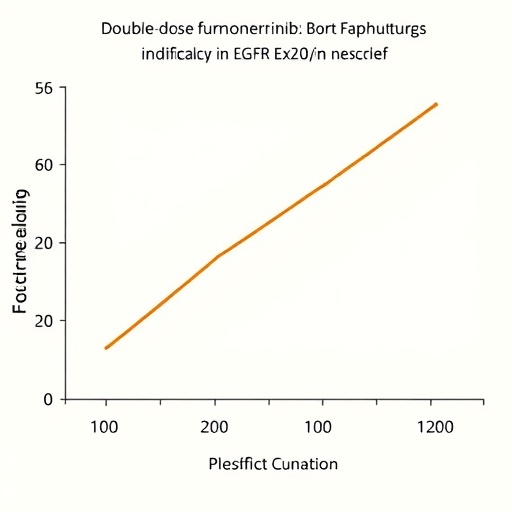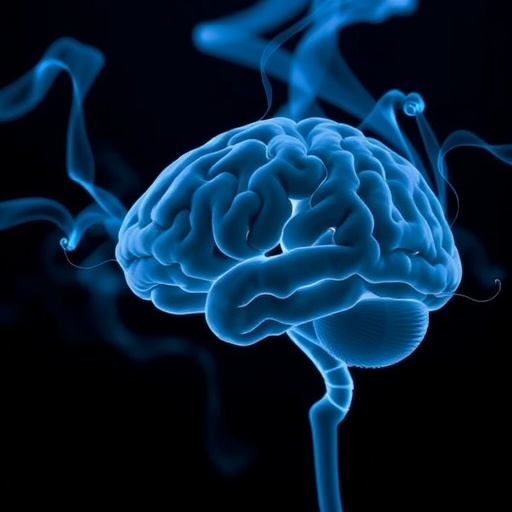In the ever-evolving landscape of psychological research, a groundbreaking study undertaken by Sun, Wang, Hu, and colleagues shines a critical light on the intricate relationship between alexithymia, a construct characterized by difficulties in recognizing and articulating emotions, and the prevalence of negative emotional states among nursing students. The researchers delve deeply into this significant topic, prompting discussions that resonate far beyond the confines of academic institutions. Their recent correction to the initial findings published in BMC Nursing raises essential questions regarding mental health within the nursing profession, an area that has seen its fair share of underrepresentation in scholarly literature until now.
The correction highlights nuances in their moderated mediation model that had far-reaching implications for how emotional intelligence is perceived among nursing cohorts. Specifically, it questions the simplicity of emotional expression in environments that are often emotionally charged, suggesting that nursing students may struggle not only with their emotional literacy but also with the very tools necessary to cope with the stressors inherent in their chosen field. Far from being a mere academic exercise, this inquiry can potentially influence training programs and curricula for aspiring nurses.
As the medical field increasingly acknowledges the intersection between emotional well-being and professional efficacy, the focus on nursing students becomes particularly poignant. They are often thrust into high-pressure environments where emotional regulation plays a critical role. The findings from this study point not only to a need for training in emotional intelligence but also suggest that interventions aimed at fostering emotional awareness could profoundly change the dynamics of care delivered by future nurses.
Furthermore, the remarkable prevalence of alexithymia—the struggle to identify and verbalize feelings—promises to be a pivotal factor in shaping the future of nursing education. With clinical experiences that can be traumatic and emotionally taxing, students may find themselves lacking in essential coping mechanisms, leading to an alarming rate of burnout and emotional distress. By addressing these issues at the educational level, nursing programs could mitigate the negative emotional impacts on student nurses and subsequently improve patient care outcomes.
What makes the investigation particularly timely is the global context, where healthcare systems are increasingly strained. During times of crisis, such as during the COVID-19 pandemic, the ramifications of emotional intelligence or the lack thereof are magnified. The correction issued by the researchers adds another layer of urgency to this conversation, underscoring the importance of ongoing research in identifying effective strategies for fostering emotional competencies among nursing students. As studies like this one continue to unveil the stark realities of emotional health in healthcare education, they open the door for institutional changes that promise to influence not just student experience but the overall health sector.
The work initiated by Sun and his co-authors serves as a call to action for educators, psychologists, and healthcare policymakers to consider the profound implications of neglecting emotional education. Their findings suggest that as nursing educators embark on developing curricula that foster nursing competency, emotional literacy cannot be overlooked. A university education, especially in one of the most emotionally draining fields, must encompass a holistic approach that marries technical knowledge with emotional understanding.
Moreover, this correction brings into question the existing support systems available to nursing students grappling with alexithymia or overwhelming negative emotions. It raises critical points about the need for counseling services, mental health resources, and support groups within academic frameworks to ensure that students do not have to navigate these tumultuous waters alone. Having solid support based on research such as this could fundamentally change the psychological fabric of nursing cohorts.
As the research continues to unfold, it challenges the current paradigms in nursing education. For educators, the findings illuminate a gap in their programs that can no longer be ignored. Integrating lessons on emotional awareness, communication strategies, and self-advocacy into the curriculum will not only equip future nurses with necessary tools for their professional lives but also cultivate an environment where emotional dialogues are acknowledged and encouraged.
In the long run, the ramifications of this research extend well beyond the classroom. The ripple effects of enhanced emotional intelligence among nursing graduates may lead to more compassionate care practices and greater patient satisfaction. When nurses are equipped to understand their own emotions, they possess the skills necessary to better navigate their patient interactions, leading to improvements in both the nurses’ mental health and patient outcomes.
With the potential for such widespread impact, the call for further investigations in this domain grows ever stronger. Future studies may explore how varying degrees of emotional intelligence correlate with job satisfaction and professional efficacy in real-world settings. The dynamic nature of healthcare, combined with the increasing complexity of patient needs, demands that emotional wellness be prioritized in both education and practice.
Overall, the correction by Sun and colleagues invites us to reconsider our assumptions about emotional well-being in nursing education. As academia, healthcare institutions, and policymakers begin to weave these insights into their frameworks, we may witness a transformation in how future nurses are trained and supported, ultimately paving the way for a more emotionally intelligent healthcare workforce.
In a world where mental health is receiving the attention it critically deserves, studies like these provide the foundational evidence that could guide substantial reform in nursing curricula. They challenge us to think beyond the technical skills required in nursing roles and to emphasize the importance of developing not just competent nurses, but also compassionate caregivers who are fully engaged in their emotional landscape.
The conversation sparked by the study of Sun et al. is an essential one, prompting a pressing need for educational systems to take proactive steps toward fostering environments where emotional intelligence is not an afterthought but a central pillar of nursing education. As stakeholders in the education and healthcare sectors respond to these findings, it might lead us toward a future where nurses don’t just provide care, they excel in it—armed with the emotional resilience necessary to navigate the challenges they face in their critical roles.
Subject of Research: The relationship between alexithymia, negative emotions, and nursing students’ emotional competency.
Article Title: Correction to: Alexithymia and negative emotions among nursing students: a moderated mediation model.
Article References: Sun, F., Wang, F., Hu, X. et al. Correction to: Alexithymia and negative emotions among nursing students: a moderated mediation model. BMC Nurs 24, 1307 (2025). https://doi.org/10.1186/s12912-025-04018-4
Image Credits: AI Generated
DOI:
Keywords: Alexithymia, emotional intelligence, nursing students, negative emotions, emotional competency, mental health in nursing.
Tags: alexithymia in nursing studentscoping mechanisms for nursing studentsemotional expression in medical environmentsemotional intelligence in healthcareemotional literacy challengesimplications for nursing curriculamental health in nursing professionnegative emotional states in healthcarenursing education and emotional well-beingpsychological research in nursingstress management in nursingunderrepresentation of mental health in nursing literature




